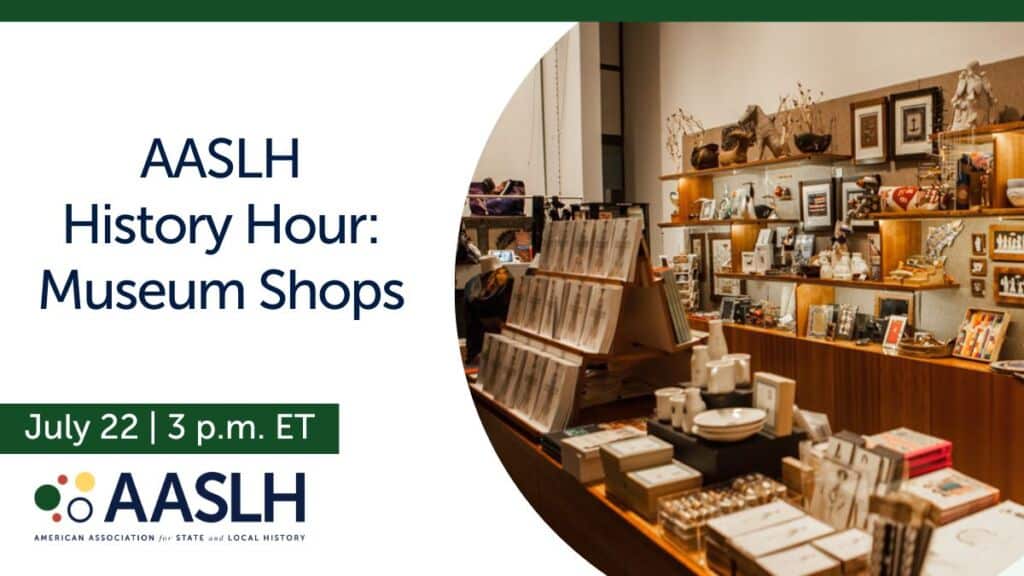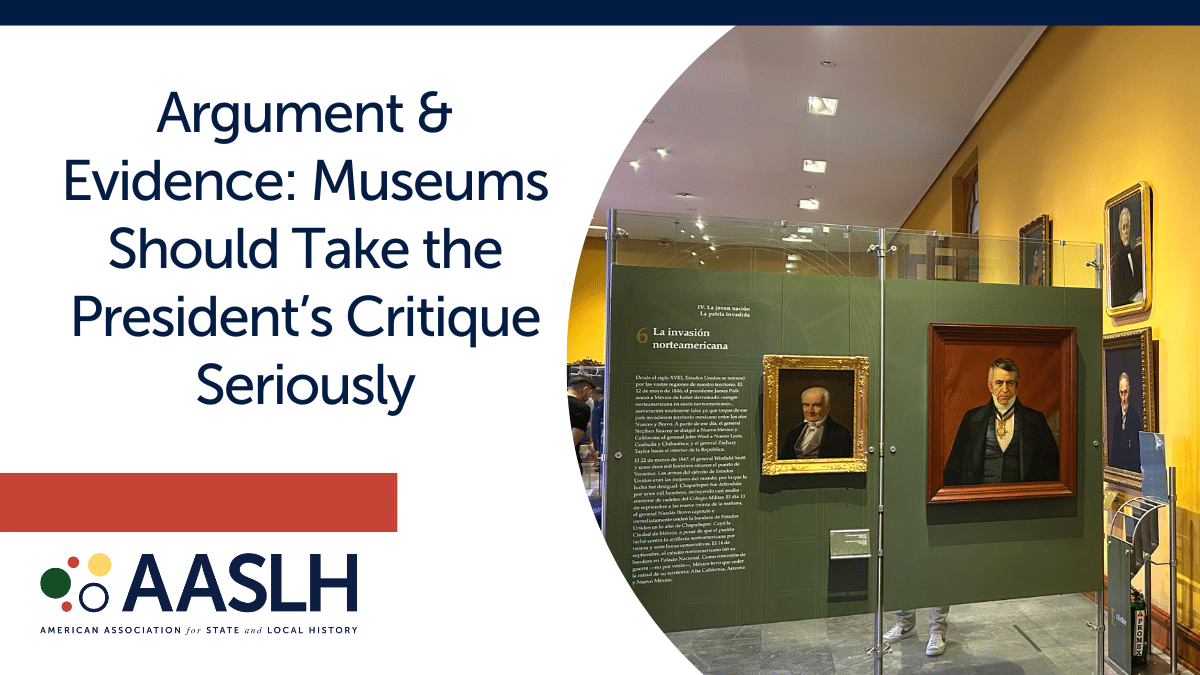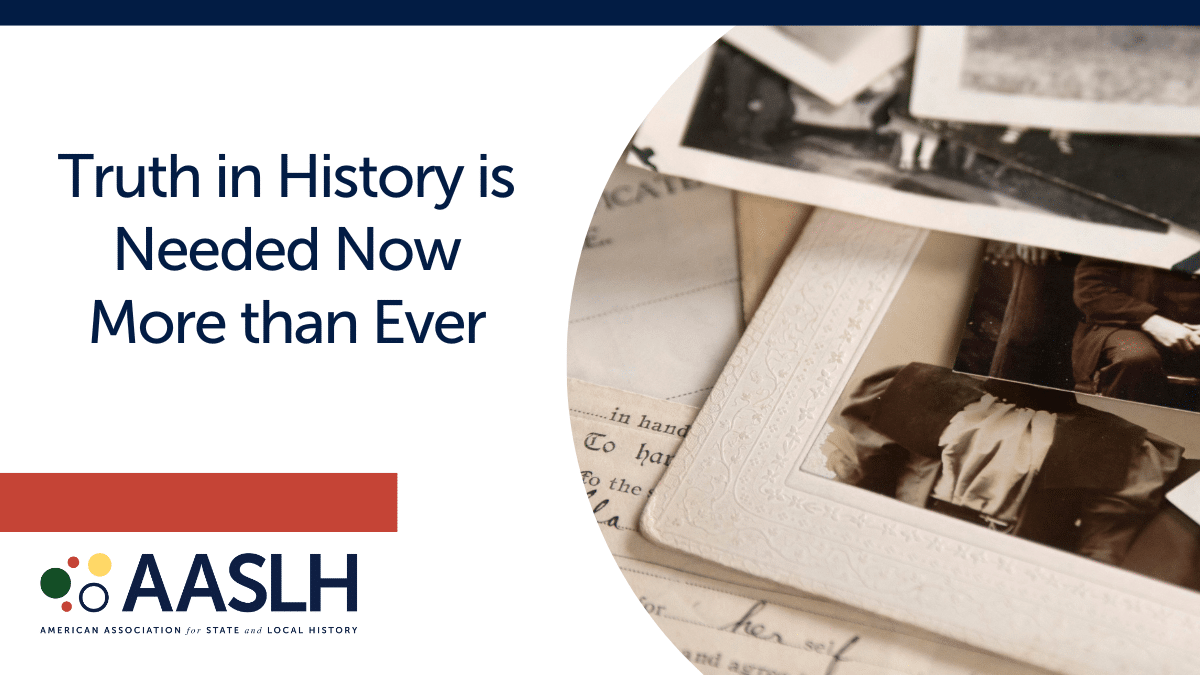
July's AASLH History Hour discussion hosted by our Small Museums Community focused on the ins and outs of museum shops. From merchandise to staffing to technology, there's more to the running of a successful museum store than just putting out an "open" sign. Participants in July's event discovered vast differences and surprising commonalities in how their stores operate and serve the diverse missions of history organizations across the U.S. and Canada. They also gained new ideas and contacts to keep the conversation going as they revamp their shops.
Our monthly History Hours are free, informal conversations and community-building events where members and nonmembers gather to discuss the challenges and opportunities of our field with peers around the country. It's a chance to meet and talk with like-minded history people to troubleshoot, brainstorm, and get inspiration for your own work. Where else can you hear from folks running a lighthouse museum in Maine, a town historical society in Kansas, and a state park in California in the same hour?
Here are some takeaways from our most recent gathering on the topic of museum stores:
- Understand why you have a shop. It it primarily to raise revenue for the site? To advertise your site through visibility and souvenirs with your name on them? To support your community by selling locally made goods? Because visitors expect it? Understanding your "why" can help you make decisions on merchandise, hours, and how much staff or volunteer time you can devote to the store.
- Boards and staff may need a reality check on the shop. It's fun to dream up new products you could sell and books you could write for your shop, but all ideas take time and often money. Have a clear picture of the revenue your shop brings in and its purpose before you dedicate staff time to retail projects, and be ready to communicate these numbers to other stakeholders.
- There are few universally successful products. While some sites struggle to sell books or holiday ornaments, these items fly off the shelves at other stores. It can be difficult to predict what will sell well, and it can change over time. It's helpful to have a way to track what sells and what doesn't, and have a system in place for expanding categories that sell well and phasing out those that don't.
- Beware of ordering and stocking too much. Many participants shared stories of a product they obtained a large quantity of that now just sits on shelves and in boxes. Whether it's calendars, holiday ornaments with the year on them, pens with an old logo, or just too many copies of one book, be careful about bulk ordering if you don't have evidence beforehand that the product will sell. Reconsider items with years or logos on them to help future-proof your inventory.
- Shops can deepen your community relationships with local makers and vendors. Many organizations spotlight local goods in their shops to give visitors a flavor of the community and tie the history they've just learned into the contemporary story of the area. Look for local artists who create things like paintings, mugs, postcards, jewelry, and textiles, and vendors like cafes and farmers who could offer things like bagged coffee beans and tea leaves, honey, soap, candles, packaged baked goods, and confections for your shelves.
- Don't forget the "museum people" audience. As history people, we are also frequent history visitors. What do you like to see in other museum shops? What do you find yourself taking home from trips most often? Use that as inspiration for your own stock.
- An unexpected item that many sites reported selling well? Stickers! Not just for kids, stickers are a popular product for all ages. People collect them and put them on personal items like water bottles and laptops. There are a variety of online vendors to help you design and print stickers for your site.
The August History Hour on preserving collections will be held August 26 and registration is now open!



